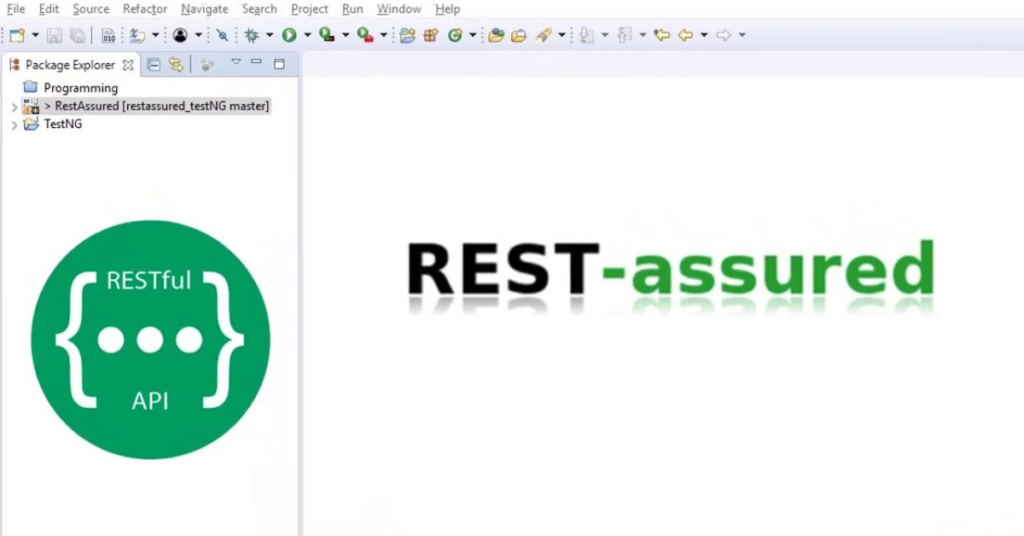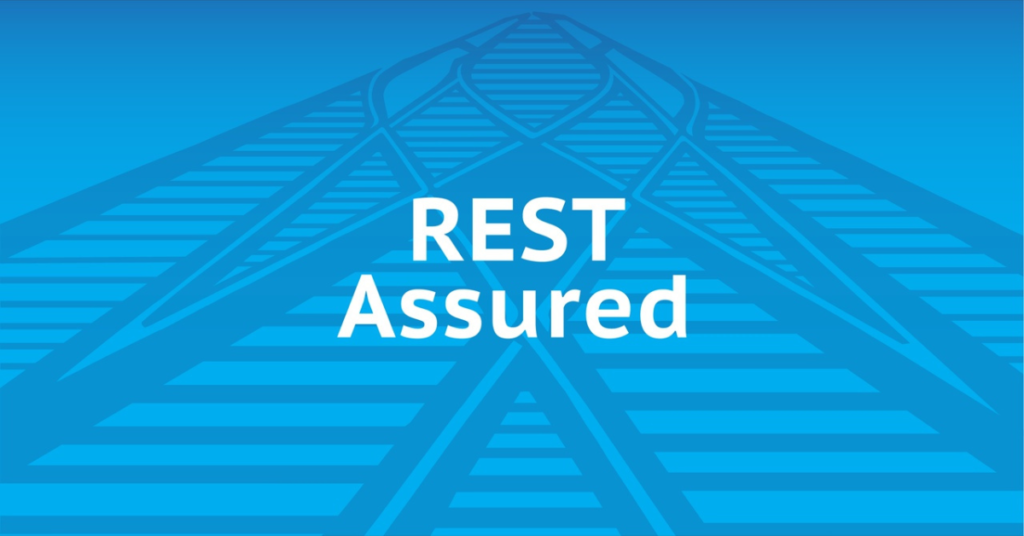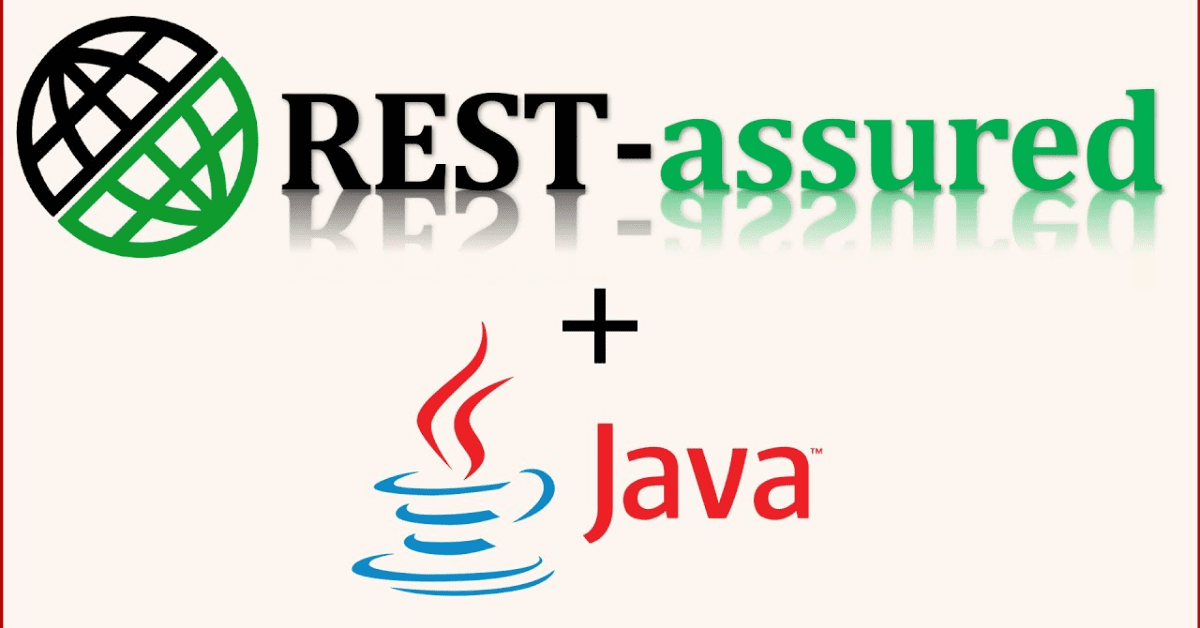Introduction
Preparing for a Rest Assured interview? Rest Assured is a powerful tool for testing REST APIs, broadly used in automation checking out. In this manual, we will cowl important interview questions that will help you exhibit your know-how and achieve your subsequent Rest Assured interview.
Ready to ace your next Rest Assured interview? Discover the top questions you want to recognize to face out!
These essential Rest Assured interview questions will increase your self-assurance and help you grasp API testing. Keep reading to discover unique answers and professional tips. Get completely prepared for fulfillment!
1. Introduction to Rest Assured in API Testing
Rest Assured is a powerful device used for automating RESTful API testing. It simplifies the manner of sending HTTP requests and validating responses, making it a pass-to pick for testers. Many experts rely upon Rest Assured for its ease of use and sturdy capabilities in API testing.
What sets Rest Assured apart is its seamless integration with Java and its capacity to handle complicated API checking out situations. This device may be without problems included with checking out frameworks like JUnit or TestNG, making it flexible for extraordinary mission wishes.
· What is Rest Assured, and why is it used in API testing?
Rest Assured interview questions is a Java-based library particularly designed for checking out RESTful APIs. It lets in testers to validate API responses, making sure that they meet anticipated conduct in actual-global packages. With Rest Assured, you may easily automate checking out of numerous HTTP strategies, together with GET, POST, PUT, and DELETE.
It simplifies API checking out with the aid of supplying built-in strategies for making requests and verifying responses, which reduces the want for writing complex code. Its popularity stems from its user-friendly layout and efficiency in handling API requests.
· How does Rest Assured differ from other API testing tools?
Rest Assured interview questions sticks out because it’s designed with simplicity and versatility in mind. Unlike different equipment, it integrates at once with Java, making it less difficult for builders who already use the language. This close integration reduces the mastering curve and makes checking out smoother.
Other gear might also require more setup or additional scripting languages; however ,Rest Assured interview questions simple syntax and powerful functions make it a preferred alternative for Java-primarily based initiatives. It additionally gives sturdy help for checking out both JSON and XML responses.
· What are the key features of Rest Assured?
Rest Assured interview questions gives an extensive range of capabilities, together with easy integration with Java, guide for each JSON and XML responses, and the ability to validate headers, cookies, and reaction instances. These functions make it a comprehensive device for all varieties of API checking out.
Additionally, Rest Assured gives particular mistakes messages and logging alternatives, supporting testers quickly identify problems and make sure extraordinary API overall performance. Its assist for authentication techniques also strengthens its enchantment for trying out secure APIs.
· Can Rest Assured be integrated with other testing frameworks?
Yes, Rest Assured interview questions can effortlessly be incorporated with famous checking out frameworks like JUnit and TestNG. This integration allows for smoother trying out workflows and higher test management. Using Rest Assured alongside those frameworks makes automatic trying out greener and more organized.
This flexibility allows testers to apply Rest Assured interview questions in a variety of challenge setups, combining its effective API checking out competencies with the structure of widely-used checking out frameworks.
2. Core Concepts of Rest Assured interview questions
Rest Assured interview questions is a powerful tool designed specifically for testing RESTful APIs. It simplifies API testing by allowing users to make HTTP requests and verify responses in a clear and readable way. Understanding the core concepts of Rest Assured is essential for mastering API testing.
These core concepts include handling HTTP methods, requests, and responses, which form the foundation of API interactions. Additionally, learning about RESTful API architecture and various types of assertions in Rest Assured helps ensure accurate testing and validation.
· What is the role of HTTP methods in Rest Assured interview questions ?
HTTP methods like GET, POST, PUT, and DELETE are central to how Rest Assured interview questions with APIs. Each method is used to achieve different processes, such as attractive data with GET or informing data with PUT.
Rest Assured interview questions provides a user-friendly way to work with these approaches, creation it easy to send needs and check replies with slight coding effort.
· How does Rest Assured interview questions handle different types of requests?
Rest Assured interview questions allows users to change various request types, such as GET, POST, PUT, and DELETE, by contribution simple methods to execute them. Each appeal type has its own purpose in testing and proof.Rest Assured interview questions simplifies the process, allowing testers to quickly specify the request type, set headers or parameters, and analyze the responses without extensive setup.
· Explain the concept of RESTful APIs in the context of Rest Assured
RESTful APIs follow principles that allow communication between systems using standard HTTP methods. Rest Assured is built around these principles, making it an ideal tool for testing APIs that follow REST architecture.
By using Rest Assured interview questions , testers can authorize that RESTful APIs work as expected, safeguarding proper data flow between client and server through easy-to-understand code.
· What are the different types of assertions used in Rest Assured?
Declarations in Rest Assured interview questions are used to verify API replies, such as checking status codes, headers, and data in the body. Common declarations include collateral that a response contains the correct status or specific data.
These declarations help testers confirm that an API behaves as expected, providing confidence that the system is operative correctly.

3. Rest Assured interview questions Setup and Configuration
Rest Assured interview questions setup and configuration are essential steps to begin testing APIs efficiently. To use Rest Assured in your project, you need to install it by adding the required dependencies to your project build file, such as Maven or Gradle. Proper configuration ensures smooth integration with your testing environment.
Additionally, setting up Rest Assured involves defining the base URI and base path for the APIs you’re testing. With this configuration, you can easily send requests and manage responses while ensuring a clear structure for your API tests.
· How do you install and configure Rest Assured for a project?
To install Rest Assured interview questions, you need to add it to your project’s build file, typically using Maven. You can do this by including the Rest Assured dependency in your pom.xml. Once installed, you can start writing test cases to validate APIs.
Configuration involves initializing Rest Assured with a base URI and base path. This makes writing test cases easier since you don’t have to repeatedly specify these values in each test.
· What dependencies are required for Rest Assured in a Maven project?
For a Maven project, the key dependency compulsory for Rest Certain is the rest-assured library. You can add this to your pom.xml file under the <dependencies> section, confirming it’s the latest version.
In adding to Rest Certain, you may also need other dependences such as json-path or xml-path for collateral JSON and XML replies during testing.
· How can you set up base URI and base path in Rest Assured?
Setting up the base URI and base path in Rest Certain is done by calling the RestAssured.baseURI and RestAssured.basePath methods. This setup defines the root speech and path for all your API requests.
This plan shortens your test cases since you don’t have to physically include the full URL in every request. It safeguards that your tests are clean and easy to preserve.
· How do you manage authentication with Rest Assured?
Rest Assured interview questions supports various types of authentications, including Basic, OAuth, and API keys. You can handle authentication by using methods like auth (). basic (), auth (). oauth2(), or adding headers for token-based authentication.
By managing authentication effectively, you can test protected APIs with ease, ensuring that your API testing covers all security aspects.
4. Handling HTTP Methods in Rest Assured interview questions
Rest Assured makes it simple to work with different HTTP methods during API testing. It supports GET, POST, PUT, and DELETE requests, making it a flexible tool for testing various API interactions. Understanding how to handle these methods is crucial for effective API testing.
When working with Rest Assured, you can easily test and validate different API behaviors. By mastering these methods, you’ll ensure that the APIs you’re testing perform as expected and meet functional requirements.
· How do you handle GET requests in Rest Assured?
In Rest Assured, handling GET requests is straightforward. You simply use the given (), when (), and then () methods to send the request and validate the response. A GET request retrieves data from a server, making it essential for checking if data is fetched correctly.
You can also add query parameters or headers to GET requests in Rest Assured. This allows for more detailed and targeted testing of your API endpoints.
· How can you send POST requests using Rest Assured?
Distribution POST requests in Rest Assured interview questions contains specifying the appeal body using the body () technique. POST requests are used to send data to a server, classically for creating new records or submitting forms.
Rest Assured makes it easy to format your data as JSON or XML and validate the response after sending the POST request, ensuring the server handles the data as expected.
· What is the process for handling PUT and DELETE requests in Rest Assured?
To handle PUT and DELETE requests in Rest Assured interview questions, you need to provide the necessary request body and specify the endpoint. PUT is used for updating existing resources, while DELETE removes them from the server.
You can add validations to check the status code and response body after these requests, ensuring that the API processes updates and deletions correctly.
· How do you validate response status codes in Rest Assured?
Confirmative status codes in Rest Assured are crucial for positive the API’s behavior. You can use the status Code () method to check if the response returns the predictable status, such as 200 for success or 404 for not found.
This simple step safeguards that your API acts correctly under numerous situations and provides useful feedback for both testing and correcting.
5. Validating Responses in Rest Assured
Confirmative replies in Rest Assured interview questions are a key step in safeguarding your API tests are correct. Rest Assured lets you to simply verify dissimilar parts of the response, such as data, status codes, and shots, ensuring your API behaves as expected. By grasping this, you’ll be confident in the dependability of your tests.
Using Rest Assured, you can validate various response formats like JSON and XML, check response headers, and even measure response times. These validations ensure that the API responses meet the expected criteria and perform efficiently.
· How do you validate JSON response data in Rest Assured?
Validating JSON response data in Rest Assured interview questions involves using built-in methods to extract and assert specific values. You can check if the API returns the expected JSON structure, specific key-value pairs, or even nested data. This makes it easier to ensure your API returns correct data consistently.
For example, with Rest Assured, you can use the sunbath () method to extract values and assert That () for validating expected outcomes, making JSON validation quick and straightforward.
· What is the process for verifying XML responses in Rest Assured?
Verifying XML responses in Rest Assured is similar to validating JSON. You can use xmlPath () to extract values from the XML structure and compare them against the expected results. Rest Assured also supports XPath expressions, which allow you to target specific nodes in the XML.
By following this approach, you ensure that your API is returning correct and structured XML data, which is essential for services using XML-based communication.
· How can you assert response headers in Rest Assured?
Rest Assured interview questions provides simple methods to validate response headers. You can extract headers like Content-Type, Authorization, and others to confirm they match expected values. This is crucial for checking if your API is sending the right metadata.
Using Rest Assured’s header () method, you can easily assert that headers meet your expectations, ensuring your API responses include all necessary information.
· What methods are used to check response time in Rest Assured?
In Rest Assured, you can measure response times using the time () method. This allows you to assert that your API is responding within an acceptable time limit, ensuring it performs efficiently under different conditions.
Checking response time helps maintain the API’s performance and ensures that users experience quick and reliable interactions.

6. Advanced Rest Assured Features
Rest Assured interview questions offers advanced features that enhance API testing, making it more efficient and comprehensive. These features allow testers to handle complex scenarios, such as request and response filtering, which helps customize and analyze API calls.
Understanding these advanced features of Rest Assured interview questions can improve your API testing skills. Implementing techniques like cookie validation and parameterization enables better control over test cases.
· How do you implement request and response filters in Rest Assured?
Request and response filters in Rest Assured allow you to intercept and modify requests or inspect responses. Filters can be used to add custom headers, log requests and responses, or apply security measures for every API call.
By implementing these filters, you gain better visibility and control over your API tests, making debugging easier and ensuring that all requests meet your test requirements.
· How can you handle file uploads and downloads in Rest Assured?
Rest Assured interview questions makes it easy to handle file uploads and downloads during API testing. You can send files as part of your request body using multipart and validate if they are uploaded correctly.
File downloads are equally simple, allowing you to check the status of the download and verify its contents after receiving the response.
· What are the advanced techniques for validating cookies in Rest Assured?
In Rest Assured, validating cookies is important for security and session management testing. You can extract cookies from responses and ensure they contain the expected data, using assertions to verify cookie names, values, and expiration times.
This feature ensures that your API handles sessions and security measures properly, improving the overall reliability of your application’s API testing.
· How do you perform parameterization in Rest Assured tests?
Parameterization in Rest Assured allows you to test multiple input values without repeating your code. You can pass parameters like query strings or path variables dynamically, enabling a more flexible and efficient testing approach.
By parameterizing your tests, you save time and reduce redundancy, which makes it easier to manage different test scenarios in your API automation suite.
7. Best Practices and Troubleshooting in Rest Assured
When it comes to Rest Assured interview questions challenging, subsequent best performs is indispensable for writing well-organized and supportable tests. These practices help ensure your tests are robust, readable, and easy to manage as your API evolves. Additionally, being prepared to troubleshoot effectively can save time and improve the overall testing process, leading to faster deployment cycles.
Troubleshooting is a dangerous aspect of using Rest Assured, as it helps identify issues rapidly. Considerate common tests and knowing how to debug botched tests can enhance your efficiency and effectiveness as an API tester. By combination best does with effective troubleshooting methods, you can meaningfully recover the quality of your API testing efforts.
· What are some best practices for writing efficient Rest Assured tests?
To write efficient Rest Assured tests, it’s crucial to keep your test code clean and organized. Start by using meaningful names for your test methods and classes to improve readability. Group related tests together and utilize comments to clarify the purpose of complex sections.
This organization helps both you and your team understand the test structure, especially as the project grows. Additionally, consider using data-driven testing techniques to reduce redundancy and make it easier to test various inputs without duplicating code.
Another best practice is to use assertions wisely. Instead of checking every aspect of a response in a single test, focus on one key assertion per test case. This approach not only simplifies debugging but also makes your tests faster and more reliable.
Incorporate logging to track the flow of your tests and any unexpected behavior. By following these best practices, you’ll create Rest Assured tests that are not only efficient but also easy to maintain.
· How do you handle exceptions and errors in Rest Assured?
Handling exceptions and errors in Rest Assured interview questions involves implementing robust error management strategies. Use try-catch blocks to capture exceptions that may occur during API calls. This allows you to manage failures gracefully and log relevant error messages for later review. It’s also helpful to create custom exception classes tailored to your project, which can provide more context when an error occurs.
This structured approach to error handling ensures you can quickly identify and address issues in your tests.
Moreover, always verify the answer status codes and gratified to catch errors early. Device assertions that variable for success status codes (like 200 or 201) and handle situations where the API may return error codes (like 404 or 500). By proactively checking for these conditions, you can avoid performance further test steps that depend on successful API responses, leading to more reliable test consequences.
· What are the common challenges faced while using Rest Assured?
One common challenge when using Rest Assured interview questions is dealing with dynamic data in API responses. APIs often return varying data formats or values, making it tricky to assert against specific elements. To tackle this, you can use JSON path expressions or XML path expressions to locate data elements dynamically. This flexibility allows your tests to adapt to changing data without breaking.
Another challenge is the need for proper authentication and authorization when accessing secured APIs. Many APIs require tokens or API keys, which can complicate test setup. To manage this effectively, ensure you implement a robust authentication mechanism in your tests and consider using environment variables or configuration files to securely store sensitive information.
· How do you debug failed Rest Assured tests?
Debugging failed Rest Assured interview questions tests can be streamlined by leveraging logging and detailed error messages. When a test fails, review the logs generated during the test execution to comprehend what went wrong. Utilize Rest Assured’s built-in logging features to print request and response details, which can provide valued visions into any differences.
These logs will help you classify whether the subject lies in the API call itself or in the declarations being made. Another effective correcting method is to run tests in isolation to classify specific failures. By execution individual tests, you can determine if the issue is widespread or contained to a specific test case.
This targeted method allows you to troubleshoot more effectively and implement fixes without affecting the entire test suite. By combination these methods, you can professionally correct failed Rest Assured tests and enhance your testing process.
FAQs
1. What is Rest Assured?
Rest Assured interview questions is a Java-based public library used for challenging RESTful web facilities. It shortens the procedure of writing tests for APIs by providing a domain-specific language (DSL) for making requests and security replies, allowing testers to focus more on testing rather than coding.
2. How do I set up Rest Assured in my project?
To set up Rest Sure, you need to add the Rest Assured dependance to your project’s build file, such as pom.xml for Maven or build.Gradle for Gradle. After that, you can organize your base URI and trail in your test educations to start formation API calls.
3. Can Rest Assured be used for testing SOAP web services?
While Rest Assured is primarily designed for RESTful APIs, you can use it for SOAP web services by sending XML requests. However, other libraries specifically tailored for SOAP testing may offer better support and features for those types of facilities.
4. How do I validate responses in Rest Assured?
You can validate responses in Rest Assured using assertions. The library provides methods to check status codes, response body content, headers, and more. By applying these assertions, you can confirm that the API behaves as expected.
5. What are some common challenges when using Rest Assured?
Common challenges include managing dynamic data in API responses, handling authentication, and debugging failed tests. Utilizing proper error handling, logging, and data extraction techniques can help mitigate these challenges effectively.
Conclusion
In precis, studying Rest Assured interview questions interview questions is crucial for the ones seeking to excel in API checking out roles. Understanding the basics, excellent practices, and troubleshooting techniques will now not best prepare you for interviews however also decorate your abilities as a tester.
As you explore various Rest Assured principles, do not forget to focus on effective verbal exchange and sensible examples to showcase your understanding. By doing so, you’ll exhibit your talent and readiness to tackle actual-international testing eventualities.
With the right practice, you may optimistically navigate your next interview and stand out as a sturdy candidate within the discipline of API checking out.


May I request more information on the subject? All of your articles are extremely useful to me. Thank you!